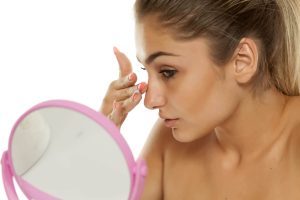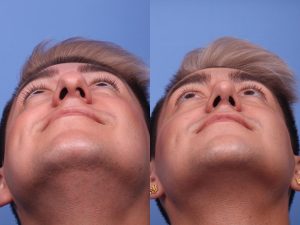The nose is one of the most important features of the face, significantly affecting one’s appearance. Unfortunately, some individuals are not satisfied with the size, shape, or structure of their nose and are looking for a way to change its appearance. The best and most effective method for altering the shape of the nose is surgery. In simple terms, rhinoplasty is one of the best ways to enhance the facial appearance and is performed using various techniques. To achieve a nose that is in harmony with the other features of your face, you need to be very careful when choosing a qualified surgeon. In this guide, we will explain rhinoplasty in detail and prepare you for this cosmetic surgery.
Methods of Performing Nose surgery
If you are determined to undergo a rhinoplasty procedure, we recommend that you take your time and carefully select the right specialist. If you choose an inexperienced or unqualified surgeon, you will certainly not be satisfied with the results.
After finding the best surgeon, you should attend consultation sessions. Then, the surgeon will examine your nose and decide on the best method for your cosmetic surgery. Based on your condition and the shape of your nose, the surgeon will choose one of the three methods described below for your rhinoplasty:
- Alarplasty Method: This is the most recent method used in rhinoplasty. During this procedure, the nostrils of the patient are reshaped. The surgeon also modifies the cartilage at the tip of the nose. These changes alter the alar base height of the patient.
- Closed Method: In this method, the surgeon does not remove the skin of the nose. Instead, the skin is separated from the underlying nasal structure, and the nose’s structure is modified. Although specialized tools are required for the closed technique, the recovery time is shorter, and the patient experiences less bruising and swelling.
- Open Method: In the open rhinoplasty method, the surgeon makes an incision on the columella of the nose to more easily separate the skin from the underlying structure. This method allows the surgeon to make more precise changes and typically results in better and more accurate outcomes compared to the closed method.
Types of Nose surgery
Most individuals seek rhinoplasty to change the shape or structure of their nose. Keep in mind that rhinoplasty is not a one-size-fits-all procedure, as the structure and shape of each person’s nose are different.
Each patient, based on their individual condition, requires a specific approach to change the shape and structure of their nose. After examining the patient’s nose, evaluating their health status, and reviewing pre-surgery tests, the surgeon will proceed with the surgery.
Additionally, the patient’s preferences and tastes play a role in determining the appropriate type of surgery. Some patients may desire a “doll-like” nose, while others may prefer a more natural-looking shape. The types of rhinoplasty are summarized below:
- Correcting a nasal hump
- Removing the nasal bridge
- Reshaping the nasal tip
- Fantasy nose surgery
- Semi-fantasy nose surgery
- Natural nose surgery
- Therapeutic and corrective surgery
Appropriate Age for Nose surgery
With modern lifestyles, even teenagers are considering nose reshaping, although this may not be advisable. As a result, doctors generally avoid performing rhinoplasty on younger individuals. One of the most common questions asked by potential candidates for rhinoplasty is the appropriate age for the surgery.
While even younger individuals may seek cosmetic surgery, age plays a crucial role in this procedure because the nose continues to grow as a person ages. The best time for rhinoplasty is when the growth of the nose and the face is complete.
Professional surgeons generally believe that the minimum age for females to undergo rhinoplasty is 16 years old, while the minimum age for males is 18 years old. Additionally, rhinoplasty is less effective after the age of 45, as the healing process is slower in older adults.
When is nose surgery Necessary?
Most people who are dissatisfied with the natural structure and shape of their nose consider rhinoplasty. If you are unhappy with your nose’s appearance, you can find a qualified rhinoplasty surgeon and proceed with changing the shape of your nose.
Unfortunately, some individuals’ noses do not match the proportions of their face, and they need to undergo surgery to correct the appearance of their nose. A small percentage of people seek rhinoplasty due to breathing disorders, but most individuals choose this surgery for aesthetic reasons.
Candidates for rhinoplasty should have a structurally problematic nose, and their expectations from the surgery should be realistic. This procedure will fully alter the overall structure and shape of the nose. The following issues may require rhinoplasty:
- Excessively large or thick nasal bones
- Extremely narrow nostrils
- Excessively wide nostrils
- Crooked or deviated nose
- Unsatisfactory nasal tip
- Deformities in the angle between the nose and the upper lip
Preoperative Care for Rhinoplasty
The first and most important step before rhinoplasty is consulting with professional specialists. You should visit your chosen surgeon so they can examine your nose and provide you with the best preoperative care instructions.
Taking photographs before the surgery is also essential, as it helps improve the results. Preoperative care is also influenced by your lifestyle and diet, but the most critical care pertains to the medications you take regularly. Some of the key preoperative care instructions include:
- Avoiding heavy meals
- Staying stress-free
- Taking a bath or shower
- Not consuming food or beverages a few hours before surgery
- Undergoing necessary tests
- Bringing essential items to the cosmetic surgery clinic
Postoperative Care for Nose surgery
Do not assume that your nose will immediately have the desired shape after surgery. In fact, if you neglect essential post-operative care, the results of your surgery may not meet your expectations. Simply put, half of the results depend on the surgeon’s expertise.
To achieve your desired nose, it is crucial to follow the surgeon’s post-operative recommendations. Even if your surgeon performs the surgery perfectly, neglecting post-surgery care will likely result in unsatisfactory outcomes, or the nose shape may deteriorate.
By following all the recommended care instructions, you can experience a shorter recovery period. However, if you ignore important advice from your surgeon, your recovery period will be significantly longer. Some essential post-operative care instructions include:
- Taking the surgeon’s recommendations seriously
- Avoiding tampering with the nasal cast or splint
- Not wearing sunglasses or prescription glasses without approval
- Being patient, as achieving the desired result requires time
Activity Restrictions After Rhinoplasty Surgery
After rhinoplasty, especially closed rhinoplasty, there are specific limitations and recommendations to follow during the recovery period to promote faster healing and avoid complications. These restrictions generally include:
- Strenuous Physical Activities: Heavy exercises (such as running, weightlifting, and contact sports) should be avoided for 4 to 6 weeks after surgery. These activities may put pressure on the nose and interfere with the healing process.
- Sleeping Position: Keep your head elevated while sleeping (use multiple pillows or sleep in a semi-sitting position). Lying flat or on your stomach may put pressure on your nose and affect its shape.
- Eyewear or Lenses: Avoid wearing glasses (both prescription and sunglasses) for 4 to 6 weeks after surgery. The pressure from glasses can cause nasal bone or cartilage displacement. Contact lenses are usually fine, but you may need to use them temporarily if you wear prescription glasses.
- Environmental Factors: Avoid exposing yourself to extreme heat or cold (e.g., saunas or hot baths), as temperature changes can affect the nose. Also, stay away from dust, cigarette smoke, and air pollution, which could put pressure on the nose and lead to infections or inflammation.
- Facial Activities: Avoid excessive laughing or crying during the first days after surgery to prevent pressure on the nose and potential damage.
- Washing the Face: Initially, avoid getting your nose wet. Refrain from using too much water or applying pressure to your nose until your doctor approves.
- Diet and Medications: Follow a proper diet and take medications as prescribed. Avoid blood-thinning medications (such as aspirin) to prevent excessive bleeding.
Recovery Period After Rhinoplasty
The recovery period depends on the type of surgery, the surgeon’s skill, and your overall health. Most patients experience significant swelling in the nose and face during the first 48 hours after surgery. This is normal and may last up to 3 days for some individuals.
The swelling from rhinoplasty usually resolves completely by the fourth day. To reduce bruising and swelling, applying cold compresses can be helpful. During the recovery period, you should sleep with your head and chest elevated above the level of your body.
The length of the recovery period depends on the medications you take. If you follow your surgeon’s care instructions, your recovery will be quicker. However, if you use unnecessary medications or painkillers without consulting your surgeon, your recovery may take longer.
Cost of Rhinoplasty
Rhinoplasty is a cosmetic surgery, and cosmetic surgeries generally cost more than medical surgeries. Several factors influence the price of this surgery. Unfortunately, insurance does not cover the cost of cosmetic surgeries, and patients must pay all expenses out-of-pocket.
One of the main factors affecting the cost is the surgeon’s expertise. The more experienced and qualified the surgeon, the better the outcome, but the higher the cost. Additionally, the clinic where the surgery is performed also impacts the cost.
The clinic’s equipment and the initial structure of the patient’s nose are other factors that influence the price. Other cost-related factors include:
- Type of rhinoplasty (e.g., thick-skinned, bony, fantasy)
- Surgical method (open, closed)
- Complexity of the surgery
- Surgeon’s experience
- Recovery period (hospitalization or outpatient)
- Clinic facilities
- Pre-surgery tests
- Surgeon and surgical team fees
- Geographic location
- Anesthesia type
Conclusion
Now that you are familiar with the various methods of rhinoplasty and understand the necessary pre- and post-operative care, are you ready for this surgery?
As explained in this guide, the first step in performing rhinoplasty is finding a professional and experienced surgeon.
If you choose an inexperienced surgeon, the results are unlikely to be satisfactory. Therefore, take your time and carefully choose your surgeon. Dr. Rahmati, a skilled specialist in ear, nose, throat, and head and neck surgery, performs rhinoplasty with the highest quality.
We also recommend reading the article about Preservation Rhinoplasty for further information.







